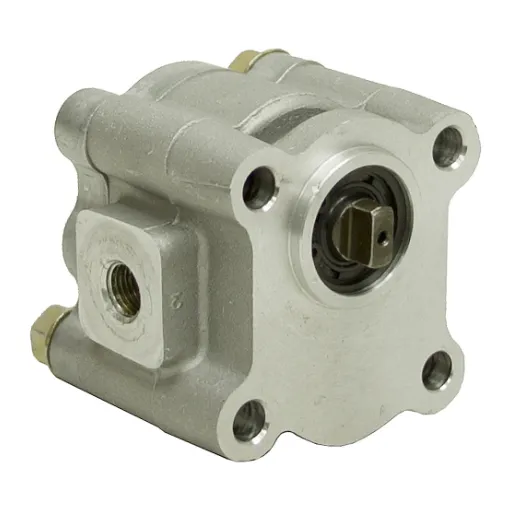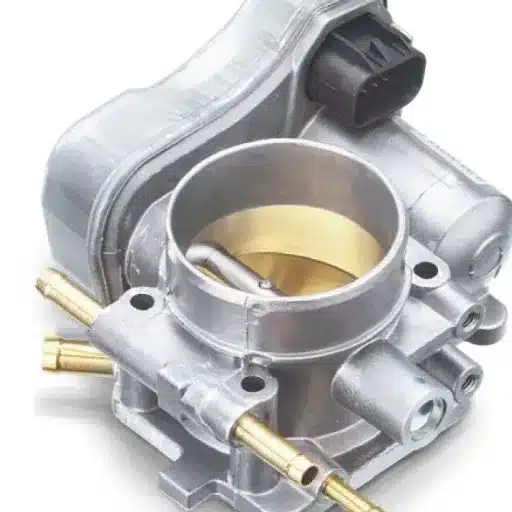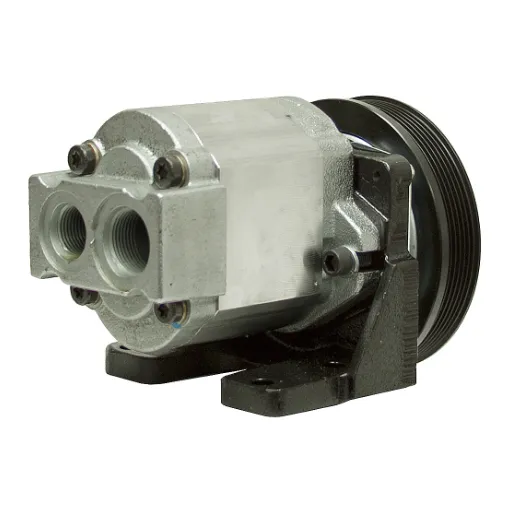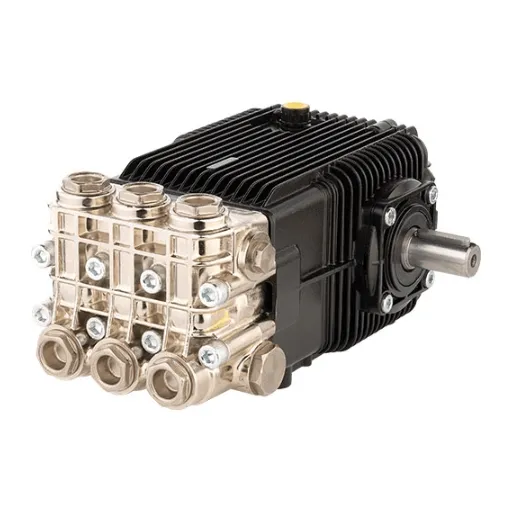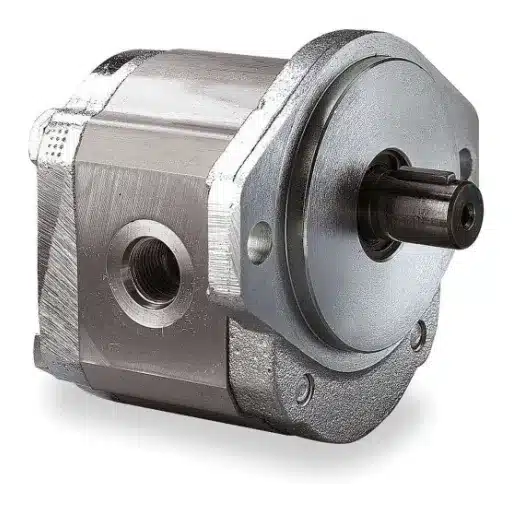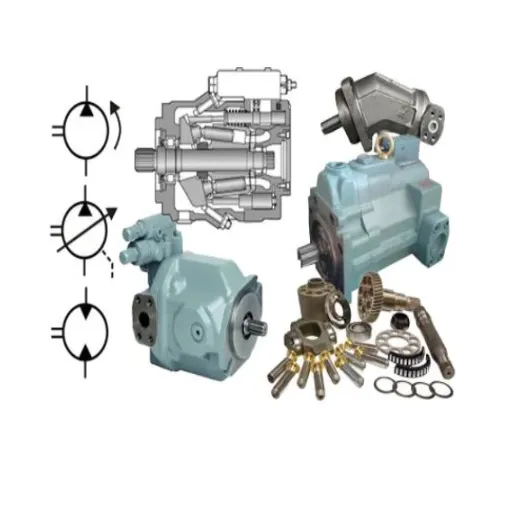The sudden malfunctioning of your Kubota tractor hydraulics can turn your projects into a nightmare. It doesn’t matter if you are on a farm, a construction site, or doing landscaping at your home; a faulty hydraulic system will create chaos and consume your time. However, instead of panicking or reaching out for expensive repair services, the first thing you should do is to familiarize yourself with hydraulic problems that can be diagnosed and solved using suitable skills and methods. This article will not only walk you through the typical difficulties experienced with Kubota tractor hydraulics but also offer you handy troubleshooting methods so that your machine is up and running in no time.
Understanding Kubota Hydraulic Systems
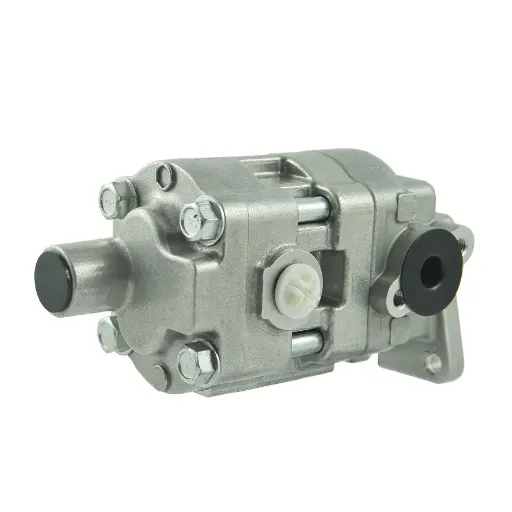
Overview of Kubota Hydraulic Systems
Kubota hydraulic systems are the essential backbone that provides power and efficiency for many operations of their tractors, such as lifting, pushing, and even operating auxiliary equipment. The action of hydraulic systems is by the use of hydraulic fluid at high pressure which transmits energy to different parts, so the operation becomes smooth and reliable. One most important characteristic that is associated with Kubota hydraulic systems is that they are simple and tough thus requiring little maintenance and a long period of life if given proper care.
The hydraulic pump is the main element of the system, and it is the one that produces the pressure by pushing the fluid through the system. The fluid under pressure then travels through the valves and hoses to the drivers which are either cylinders or motors, and it is these that carry out the specific jobs. Besides, there is a tank that holds the hydraulic fluid in the system and a number of filters that eliminate dirt and other contaminants from the fluid thus protecting it from damage or wear.
Checking and servicing the hydraulic system regularly to nip any potential problems in the bud is very crucial. Among the maintenance activities are the fluid level and hydraulic filter replacement as recommended, hoses area inspection for leaks or damage. If these precautions are taken, Kubota tractors will keep providing optimal performance even when the conditions are tough.
Common Components of Hydraulic Systems
Hydraulic systems are made up of several important parts that are working together to transfer power and allow the machine to run smoothly. Among the most important components is the hydraulic pump, which is responsible for changing mechanical energy into hydraulic energy by pressurizing the fluid. This fluid under pressure is then supplied to the various functions of the system as the power source.
Another component that is of utmost importance is the hydraulic hoses and fittings network. These components are meant to transport the fluid from the pump to the actuators or motors. It is very important to use high-quality hoses and suitable fittings in order to avoid leakage and to keep the system at the right pressure. To keep these parts in good condition, inspections have to be done regularly.
On top of that, the hydraulic fluid is of great importance for the proper functioning of the system. Its main function is to transmit power but it also does the lubricating and cooling of the various moving parts at the same time. Consistent monitoring and timely replacement of the fluid are the requirements to get the maximum efficiency. These parts in unison are the very foundation of a hydraulic system that can be relied upon for powerful and performance even in the most demanding applications.
Importance of Hydraulic Performance in Tractors
The performance of hydraulic systems is vital in tractors because it directly influences efficiency, functionality, and versatility. Hydraulic systems are an indispensable source of power for the tractors’ main components like lift systems, steering and braking systems. A hydraulic system that is well-maintained allows for accurate control and very smooth operations, thus enabling tractors to take on the heaviest workloads in different sectors, be it agriculture or industry.
The performance of a hydraulic system in an effective way is one of the major aspects that enhance the tractor’s ability to operate various implement types like plows, seeders, and loaders. If the hydraulics are not working optimally, then the performance of these attachments will also be poor and hence the productivity of the entire operation will be affected. Besides this, there will be a likelihood of causing equipment damage. Therefore, regular maintenance, including fluid checks and timely replacement of worn components like seals or filters, becomes critical to sustaining optimal performance under demanding conditions.
Moreover, hydraulic systems bring an advantage by providing safety, as well. Reliable and responsive hydraulics make sure that the tractors are always stable and under control, no matter the circumstance, but especially when the tasks requiring lifting or traversing over uneven terrain. Hence, farmers are assured of safety as they work with the tractors. That is why proper upkeep of the hydraulic system is seen not only as cutting down on the maintenance cost of the tractor but also as having a machine that can handle varied agricultural needs efficiently.
Identifying Hydraulic Problems
Signs of Hydraulic System Failure
Hydraulic system failure can take different forms and impact the tractor’s performance in a major way. The most frequent sign is apparent power or efficiency drop in the hydraulic components. For instance, lifting devices may run slowly or may not be able to hold heavy weights, which points to troubles like low hydraulic fluid levels or leaky pipes. Another loud signal is strange sounds like whining, grinding, or banging which might be an indication of trapped air, worn out parts, or fluid contamination.
Another important indicator is the leaks in the hydraulic system. These leaks usually show up as traces of fluid under the tractor or on its parts. Hydraulic oil leaks not only lower system efficiency but also create safety risks and environmental issues. Checking hydraulic hoses, seals, and fittings for wear, cracks, or breaks can help find any leak sources before they get worse. Moreover, the heating up of the hydraulic system signals a problem such as too much pressure, clogged filters, or not enough fluid.
Finally, irregular or sudden movements of hydraulic implements are very serious signs. This problem occurs when dirt in the fluid flow, or air is stuck in the system. It is very important to deal with these issues quickly because if they are ignored, they can cause more damage or even a total system failure in the long run. Watching warning lights, doing regular maintenance, and repairing quickly are practical steps in preventing prolonged failure and assuring smooth operation of the tractor’s hydraulic system.
Symptoms of Low Pressure in Hydraulics
Low hydraulic pressure can be seen in various ways, often affecting the overall performance and efficiency of the machine. One of the main signs is the unresponsiveness of hydraulic functions, such as the lifting or lowering of attachments, which suddenly becomes less pronounced. This may lead to the tractor’s inability to operate smoothly with resulting sluggish or jerky movements. Moreover, the operators might be troubled by a constant whining or buzzing noise coming from the hydraulic pump, which more often than not, is an indication of wear and tear owing to low pressure.
Another typical indication of a low pressure is the disparity or diminutive power supply across hydraulic parts, which may result in the operating speeds being unequal. For instance, one side of a loader arm is going to be at a higher position or be outstretched more than the other one, thus creating dangers and wasting time and resources. What’s more, leaks of any kind, small or big, are among the external factors affecting hydraulic performance. Fluid leaking from a hydraulic system will result in a constant drop in pressure and can be detected by seeing fluid pooling around hydraulic hoses or connections or fittings. Catching and recognizing these leaks early would help prevent significant failures.
If the pressure is kept low for a long time, it may also be a factor in system overheating. It happens when the system’s parts like pumps or valves work harder to maintain the low pressure instead of the ideal one and thus produce heat. Overheating not only reduces the life of hydraulic components but also causes the hydraulic fluid to lose its properties which in turn deteriorates the performance of the system. Regular inspections, changing the fluid on time, and using the right hydraulic oil can really help in alleviating these symptoms and keeping the system functional.
Strange Noises Indicating Hydraulic Issues
Noises that are not normal in a hydraulic system usually are the first sign of problems that are hidden from view and thus it is very important to deal with them quickly. The noises that are commonly heard include knocking, banging, and hissing, and each of these has its own technical implications. For instance, knocking sounds are usually related to air trapped in the system, which causes the formation of bubbles that pop violently under pressure, a situation known as cavitation. The effect is two-fold; the efficiency of the system is reduced and component degradation might occur in the long run due to the heat produced by the friction created during the cavitation. The bangs very often are associated with the flow of the liquid being unstable or uneven caused by the pumps that have seen better days, misaligned parts, or clogged conduits.
The hissing sounds are very often a signal of leakage, which could be external or internal. While, generally, external leaks can be quite conspicuous, they may leave traces that are seen on the surface of the ground hydraulic fluid flows out from. Internally, however, leaks are more difficult to identify and often show up as a gradual decrease in performance or rising of operational temperature. If leaks are located and fixed when they are small, then it is really possible to avoid damage that is going to surely be more expensive to repair or replace. Although sometimes minor leaks may look harmless, they are in fact capable of causing a chain of complications like pressure dips or contamination if they are allowed to go unnoticed.
The tumor of modern hydraulic systems comes with sensors and diagnostics tools that quietly but efficiently keep track of those noises by delivering system pressures, temperatures, and flow rates data. The combination of maintenance and inspections allows the operator to identify accurately the problem and take proper corrective measures based on the data obtained. When hydraulic systems are maintained this way i.e. being really proactive, through detecting noises and using diagnostic data, the systems will be keeping their efficient state while also avoiding unplanned downtimes and expensive failures.
Common Hydraulic Issues in Kubota Tractors
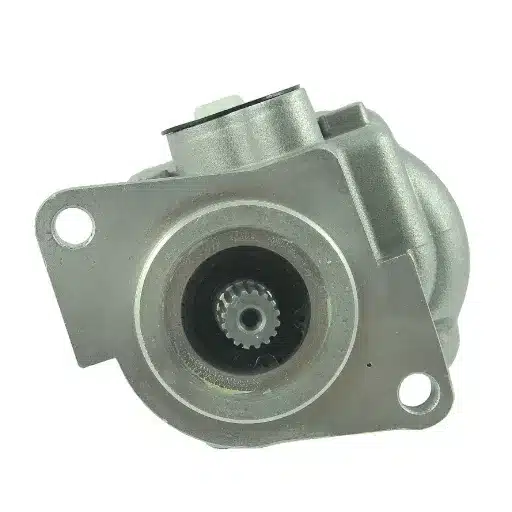
Weak or Slow Hydraulic Performance
Weak or slow hydraulic performance in Kubota tractors is likely to happen quite frequently especially when the productivity and operational efficiency are the major concerns. One of the prime causes for this hydraulic performance issue is the low hydraulic fluid levels which, if not checked, may disrupt the pressure in the system resulting in sluggish or erratic performance. One of the first measures in this regard is regular checking of the fluid levels and making sure that the right type of fluid is being used as per the tractor’s manual. Moreover, very low temperatures can retard the fluid’s flow and cause the system to respond slower due to the latter’s thickening as a result of the cold.
Another typical reason behind the weak hydraulic performance is hydraulic fluid contamination. The system can be infiltrated by dirt, debris, or water, thus, making the fluid less viscous and this goes hand in hand with decreased efficiency and even damage to the hydraulic components like pumps, valves, and cylinders. One of the main measures to regulate and keep the system free from contaminants is the use of high-quality hydraulic fluid and the regular replacement of the filters. Routine cleaning and keeping an eye on the system’s components further minimize the risk of contamination-related performance issues.
Moreover, the internal components, such as seals, hoses, and O-rings, could wear and tear deteriorating hydraulic efficiency over time significantly. The seals when leaking or the hoses when degraded may cause loss of pressure while the O-rings when worn-out may give rise to internal leakage which eventually leads to slow or weak performance. Repairs on visible leaks followed with regular maintenance can help detect and resolve such issues early thus allowing the hydraulic system to run smooth. Identifying the root causes and having a proper maintenance schedule is crucial for avoiding long downtimes and getting the best performance out of Kubota tractors.
Hydraulic Cylinder Problems
Hydraulic cylinders are the heart of Kubota tractors, and they convert hydraulic energy into mechanical force for various operations like lifting, digging, or pulling. Nevertheless, every mechanical system has its lifespan, and hydraulic cylinders are no exception to this rule. These cylinders might eventually develop issues that can disrupt operations after a certain period of use. One of the most common hydraulic cylinder problems is external leakage, which is typically due to broken seals or fissures in the cylinder barrel. This problem not only decreases the machine’s efficiency but also causes hydraulic fluid contamination that adversely affects the overall system.
Another common problem with these hydraulic devices is internal leakages that happen when the seals inside the cylinder weaken or break and hydraulic fluid can cross the piston. The result is that the cylinder’s ability to maintain pressure is significantly diminished, causing weak or even total failure of the actuation. The most common reasons for quick sealing deterioration are poor maintenance, prolonged exposure to high-pressure situations, and hydraulic oil contamination. Regular inspections and timely changing of seals are important practices that will enable the cylinders to retain their operability and thus prolong their life.
The correct alignment and mounting of hydraulic cylinders are also very important in the fight against premature failures. Misalignment results in unequal distribution of the stress among the cylinder parts which can cause bending, scoring, or even breaking of the rod. Furthermore, excessive side loads or incorrect mounting configurations put seals and rods at risk due to the greatly increased wearing. Thus, to be able to escape such difficulties, it is essential to adhere to the installation guidelines of the manufacturer, perform alignment checks regularly, and keep the hydraulic system well-lubricated. By tackling these problems, downtime due to maintenance can be reduced to a minimum and the performance of Kubota tractors can be sustained at the best level.
Leaks and Clogs in the System
Hydraulic system leaks and clogs affect the performance and dependability of Kubota tractors to a large extent. Hoses, seals, and connections are the common places of leak incidents caused by the aging of parts, insufficient maintenance, or high pressure in the system. The loss of hydraulic fluid due to leaking can result in a very low system efficiency and even cause parts to be damaged if not attended to quickly. Therefore, regular checking of the system for any visible signs of fluid loss or unusual drops in hydraulic pressure is recommended for operators to detect leaks.
Clogs, in contrast, are mostly caused by the obstruction of fluid flow within the system by contaminants, which can be dirt, debris, degraded hydraulic fluid, or even a combination of all. As a result of forming clogs, the flow of fluids is weakened and thus the performance of pumps, valves, and actuators, which are essential in the manufacturing process, is also weakened. Should there be clogs in the system, the resulting situation is usually a delay or malfunction of the process. Use of high-quality hydraulic fluids, timely changing of filters, and maintaining clean working conditions are some of the ways to significantly lower clog risks.
Adding these proactive methods to regular maintenance will not only prolong the life of the equipment but also prevent costly downtime. Effectively dealing with leaks and clogs increases the operational reliability of Kubota tractors and reveals the necessity for strict hydraulic system care.
Troubleshooting Hydraulic Problems
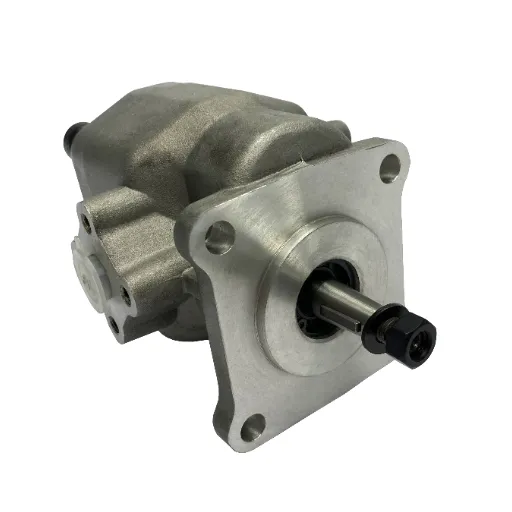
Step-by-Step Guide to Troubleshooting
- Inspect Hydraulic Fluid Levels: Initially, hydraulic fluid reservoir should be checked accordingly to fill it up properly. System performance can be seriously affected by low fluid levels and they may also point to possible leaks. The use of manufacturer’s hydraulic fluid is always a must to ensure system compatibility at the best possible level.
- Examine the Hydraulic Lines and Hoses: All the hydraulic lines and hoses should be inspected visually in searching of the signs of wear, cracks, and leaks. Specially, junctions and fittings should get the greatest attention, as these are the places where the problems are most likely to develop. A hydraulic system under pressure can create leaks that may not be instantly observed, hence pressure testing could be considered.
- Monitor System Pressure: Measure the pressure at various points in the system using a hydraulic pressure gauge and compare it with the specifications given in the Kubota tractor’s service manual. Any deviation from standard pressure can signal blockage, worn parts, or a malfunctioning pump.
- Evaluate the Hydraulic Pump: To check the hydraulic pump, one would observe flow rates and at the same time listen for unusual noises like whining or grinding. Flow being scarce or noise being irregular can imply either that the hydraulic pump is damaged internally or that air is trapped in the hydraulic fluid.
- Assess Hydraulic Cylinders: The hydraulic cylinders should be checked for working properly. The cylinders should be extended and retracted to make sure there is no unusual delay, resistance, or jerky movement. If there are leaks in the seals of the cylinder, then such seals should be replaced immediately to sustain performance.
- Analyze Control Valves: Bad control valves can cause the system to malfunction by directing hydraulic fluid the wrong way. Dismantle and inspect the valves for any blockages, accumulation of debris, or mechanical failure. The cleaning or replacement of defective control valves is frequently part of the plan to return to full efficiency.
- Test System Filters: Filters that are dirty outright clogged are one of the most frequent causes of system performance problems. Check the condition of the filters and if they are worn out replace them, but make sure the new ones meet the required specifications. A filter that is clean stops dirt from getting into the hydraulic system and hence keeps fluid circulation cleaner.
- Review Recent System Changes: If there was a maintenance procedure or modification that caused the issue, then the work carried out should be double-checked. Possible causes of the failure may include incorrect installations, incompatible components, or changes in the hydraulic system. Restoring the original settings can sometimes eliminate the issue.
💡 Pro Tip: By systematically going through these steps, operators can locate and fix common hydraulic problems in a fast manner. A thorough, technical method of troubleshooting ensures reduction of downtime to a minimal level and extension of the life of Kubota tractors. In case of ongoing or complicated issues, seeking a certified Kubota technician is advisable in order to avoid more damage to the system.
Visual Inspection Techniques
Hydraulic systems dependent on visual inspection as a major and quite reliable first step in diagnosing possible issues. The very first thing to do is to look over all the components that can be seen for any signs of wear, damage, or leakage in the poorest, or even the best, cases. Items that should receive especially careful scrutiny include hydraulic hoses, fittings, and seals because they are the most common sources of failure. Besides these, ones cannot overlook the inflow of discolored fluid, cracks, or bulges that might have their origins in the system’s internal deterioration. Moreover, the visible parts of the cylinders should be monitored for any pitting or scoring, as these may lead to a breakdown in sealing and consequently loss of fluid.
For more accurate results, the use of modern diagnostic tools like borescopes and thermal imaging cameras to check for internal elements and to detect heat irregularities in the system respectively is recommended. The detection of possibly inefficient energy transfer, blockage in the flow causing gradual failure of the component are all reliable areas to monitor since heat is a common sign of them. The combination of these techniques not only provides for an inspection that is detailed but also lessens the possibility of missing the very difficult to notice issues.
A visual inspection is part of maintenance and thus the system must be turned off, and it should be depressurized first in order to observe safety rules. The monitoring of activities, which includes the keeping of records of what has been seen plus the analysing of trends, are going to be very helpful in identifying the problems that are happening regularly, thus leading to the possibility of establishing and applying preventive maintenance strategies. This whole process of systematic approach in the maintenance of hydraulic system has its advantages, among which are increased reliability and effectiveness, which in turn result in prolonged productivity of the entire operation.
Checking the Hydraulic Fluid and Filter
Hydraulic fluid is the heart of a hydraulic system and the main power source, so it transmits the power, lubricates the parts, and cools the system. Regular checks of the hydraulic fluid are necessary to keep the system operating smoothly and to avoid breakdowns caused by contamination or degradation of the fluid. The first step is to check the fluid level with a dipstick or sight gauge according to the manufacturer’s instructions. The fluid level has to be within the permissible range; levels that are too low may cause cavitation and pump damage while overfilling might create pressure differences.
Furthermore, the fluid’s state must be monitored. A good and clear hydraulic fluid can be an indication of minor or no contamination and good wear. The hydraulic fluid that is clean is always a bit transparent and has a specific color, which depends on the type of fluid used, like light amber or red. The presence of particles, cloudiness, or discoloration indicates contamination that could lead to wear of the component or malfunction. The filtration or replacement of the fluid should be done right away for any particle contamination that goes beyond ISO cleanliness standards.
In the same manner, it is also important to check the hydraulic filter condition. To prevent contamination from circulating in the system, the hydraulic filters collect the particles and debris. A filter that is blocked will slow down the flow and increase the pressure drop, which may cause inefficiencies and even damage to the components. By using the system’s pressure gauges or any other diagnostic tools, you will know when the filter needs to be replaced, especially if there is a significant difference in pressure across the filter. Always check with the manufacturer’s service intervals and specifications for filter replacement to ensure the filters’ compatibility and performance.
An active maintenance program that includes regular fluid quality testing combined with filter change reduces the possibility of unexpected emergency shutdown and increases the life span of hydraulic parts. The use of advanced methods like inline particle counters or laboratory fluid analysis can take system monitoring and maintenance precision practices to the next level.
Preventative Maintenance for Hydraulic Systems
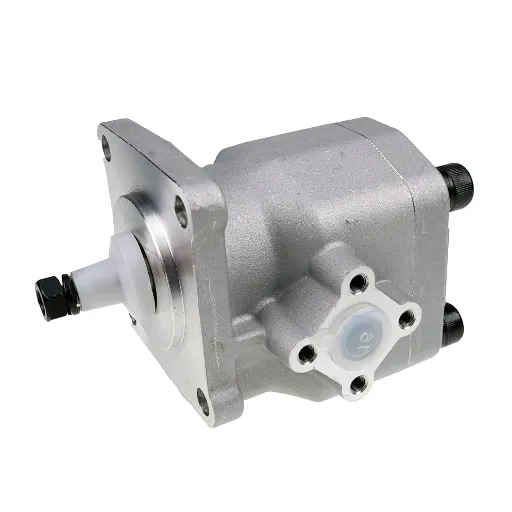
Regular Maintenance Tips for Kubota Tractors
Following a systematic maintenance schedule is a must for your Kubota tractor to achieve optimal performance and last longer. Start with daily inspections of the machine focusing on fluid levels—the engine oil, coolant, and hydraulic fluid—making sure they are within the limits set and recommended by the manufacturer. It is also necessary to check the filters’ condition regularly—air, oil, and fuel filters—should be cleaned and replaced as per service intervals to keep contaminants from running the operation down.
Moreover, monitor tire pressure and tread depth and wear as these factors have a large impact on the tractor’s traction and stability, particularly during load changes. Set up a schedule for the greasing of all critical lubrication points including the front axle and steering column so that friction and the damage to the parts will be minimized.
Inspect belts, hoses and other rubber components periodically for cracks, leaks or signs of wear that can cause malfunctions. Replace these parts in accordance with the OEM-specific recommendations. Check the battery terminals for corrosion and proper connections as this is crucial for the tractor to operate since a working electrical system is a must for tractor operations.
Implementing these methods together with the official Kubota service manual guarantees that the tractor will always be in good condition. Keeping a maintenance record with details will also help detect potential issues that keep coming back and will enable prompt action.
Importance of Monitoring System Pressure
The monitoring of system pressure is essential for the proper operation and dependability of hydraulic and pneumatic systems in tractors. Speaking for myself, I consider that somehow pressure in the system that varies can be an indicator of possible problems like leaks, blockages, or failing components. If not taking care of them, the defects may cause not only reduced performance or system failure but might even lead to repairs that are costly and detrimental to operational capacity for a long time. For this reason, I give priority to regular pressure checks so as to ascertain no instability and consistency in the system’s output.
In my view, the proper system pressure is very important to the hydraulic systems’ proper functioning which usually takes up the control of the tractor’s main equipment and other ancillary devices. Any change outside the recommended pressure levels can cause the lifting capacity to be reduced, the response to be slow, and the operation of implements to be uneven. I systematically employ calibrated gauges and monitoring tools to make sure that the system adheres to the specified pressure parameters as presented by the manufacturer’s guidelines thus minimizing the risk of equipment malfunctions during field operations.
In addition, handling pressure-related problems in a proactive manner is indeed an opportunity for cost-saving and safety. The occurrences of high-pressure failures can open up one to serious risks; in fact, they are not only the risks that are associated with an operator but also damages to the equipment. However, low pressure sometimes requires a correction that can hold up a task deemed critical. My contact with the Kubota service manual and diagnostic tools is my utmost support to routinely monitor the system, hence allowing me to act promptly in keeping the system performance at its best. This stringent method increases not only productivity but also the life of the tractor’s hydraulic parts.
Avoiding Overheating and Downtime
To prevent overheating and downtime, the cooling system of the tractor should be properly maintained. Overheating which is usually brought on by low coolant level, blocked radiator, or deteriorated cooling fan can cause heavy damage to the engine and its parts. To prevent this, it is crucial to regularly check the coolant level and make sure the radiator is clear of any debris. Also, using the manufacturer-recommended coolant type and following all the services intervals are important for the effective control of engine temperatures. Replacing the aging parts proactively like the thermostat or water pump can further lower the chances of unexpected thermal failures.
Advanced diagnostic tools and temperature monitoring devices are indispensable for the real-time data to assess engine performance. For instance, new Kubota tractors typically come with embedded sensors that can indicate very early signs of irregular temperature increases. In addition, the regular use of a Kubota service manual along with these tools allows users to take preventive actions like load adjustment or maintenance scheduling before overheated situations become disastrous. Furthermore, the cooling of the engine is enhanced and heat build-up during prolonged use is lessened by the keeping of proper airflow around the engine housing which is through cleaning of vents and fans.
The reduction of downtime also entails the adoption of strategic operational practices. Heavy-duty tasks such as tilling or plowing should be carried out when the temperatures are cooler to prevent the engine from heating up too much. Allowing the machine to rest intermittently to cool down lengthens its life and enhances its performance. Moreover, maintaining a log of temperature fluctuations and repairs can help in pinpointing the ‘hot spots’ that need more precise interventions based on their frequency. With the use of these detailed and disciplined approaches, the operators not only lower the possibility of overheating but also keep the tractor working and efficient under different circumstances.
Frequently Asked Questions (FAQ)
Q: What are the common signs that kubota hydraulics are not working?
A: The common signs of non-functioning kubota hydraulics are lethargic response times, strange sounds, and the inability of the hydraulic lift to operate normally. You may also see dripping or other signs of wear around the hoses and seals.
Q: How can I troubleshoot kubota hydraulics not working?
A: You can troubleshoot non-functional kubota hydraulics, firstly, by observing the hydraulic fluid level. Make sure that the hydraulic fluid is clean and at the desired level. Also, check for internal leaks or destroyed parts in the hydraulic circuit and examine the hoses and seals for wear or damage.
Q: What should I do if I notice slow response in my kubota hydraulics?
A: If you experience slow responsiveness in your kubota hydraulics, it may signify that there are issues with the hydraulic systems. First check for air in the system, and confirm that the hydraulic fluid is at the ideal level. Also, check the pressure gauge to ascertain the pressure of the system.
Q: How can I identify damaged components in kubota hydraulics?
A: To determine broken parts in the kubota hydraulic system, observe for leakage and wear signs. Check all system components including hoses, seals, and the hydraulic control unit for any damage indications. A hydraulic test can also assist in discovering internal leaks or other complex issues.
Q: What are the troubleshooting steps for hydraulic systems?
A: The troubleshooting steps for hydraulic systems contain checking the hydraulic fluid level, inspecting hoses and seals for damage, testing the pressure gauge, and looking for signs of internal leaks. Follow these troubleshooting tips to pinpoint the issue effectively.
Q: Can I fix sticking or internal leaks in kubota hydraulics myself?
A: It is possible for the owner to repair some minor problems, but leaking, sticking, or internal leaks generally require specialized skills and more advanced tools. If you lack the experience, it is best to refer to an expert in hydraulics troubleshooting to avoid inflicting more damage.
Q: What is a comprehensive guide to kubota hydraulics troubleshooting?
A: A comprehensive guide to kubota hydraulics troubleshooting involves understanding the system components, identifying potential problems, and following a systematic approach to diagnose issues like slow response times and hydraulic lift failures. It’s essential to regularly maintain the system to prevent future hydraulic problems.
Q: How often should I check the hydraulic fluid level in my kubota?
A: It is suggested that you check the hydraulic fluid level in your kubota on a regular basis, especially before long operating sessions. By doing this, you can prevent slow response and damage to the system components that would have been caused by lack of hydraulic fluid at the correct level.
Q: What are the potential causes of air in the hydraulic system?
A: The potential causes of air in the hydraulic system can be attributed to improper sealing of hydraulic hoses, having damaged seals, or keeping fluid levels that are too low. Air trapped in the system may result in sluggish response and inefficient operation of the hydraulic lift.
Q: When should I consider replacing faulty parts in kubota hydraulics?
A: You should take into account the replacement of damaged parts in kubota hydraulics whenever you detect a leak or notice a decline in the hydraulics performance. If troubleshooting leads to the conclusion that some parts are unrepairable or are the main cause of the problems, then it is time for replacement to maintain the hydraulic system working.
Final Thoughts
Maintaining your Kubota tractor’s hydraulic system doesn’t have to be overwhelming. By understanding the common issues, following systematic troubleshooting procedures, and implementing regular preventative maintenance, you can ensure optimal performance and longevity of your equipment. Remember, early detection and prompt action are key to avoiding costly repairs and downtime.



